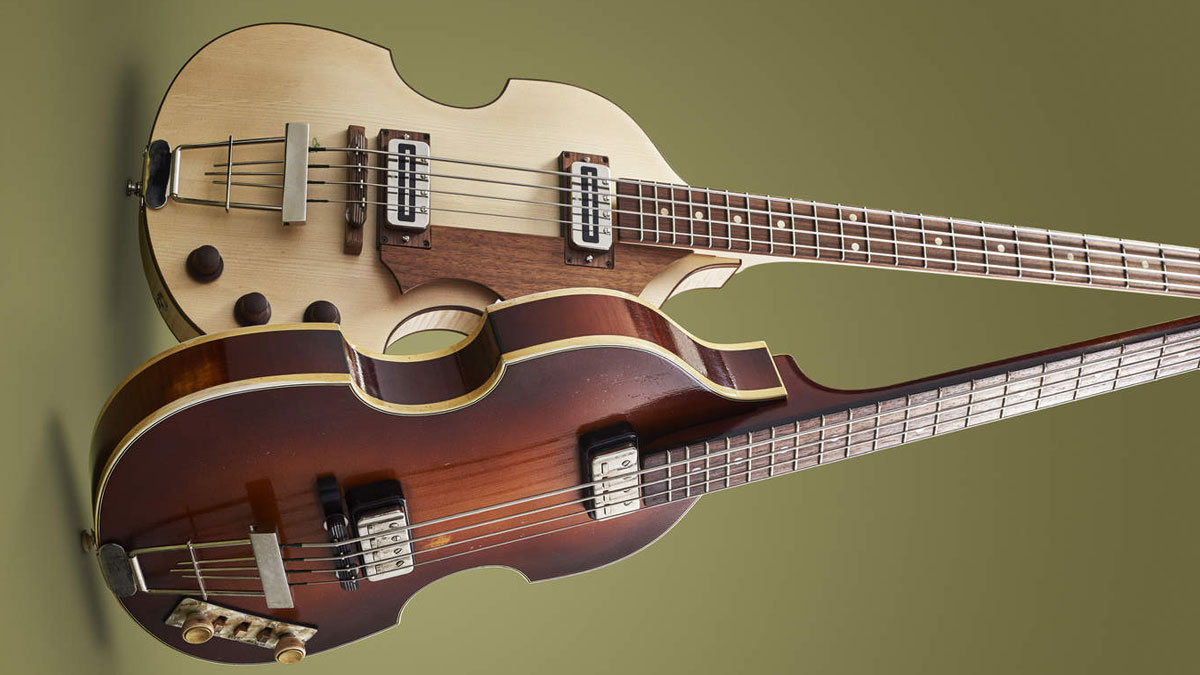MusicRadar Verdict
A piece of history, old and new.
Pros
- +
Authentic looks, classic tones.
Cons
- -
Limited tonally.
- -
Cramped string spacing.
MusicRadar's got your back
The violin bass design is what Höfner is best known for, everybody knows that - but that doesn’t mean it can’t move forward with technology, does it?
Here we have two new variants on the classic template. One of them is as close an example of the classic violin bass as you are likely to see, while the other is a more unusual addition to the portfolio, the recyclable Greenline. In the latter, any plastic elements that can’t be reused or broken down to constituent parts have been replaced by timber and metal. How do they measure up?
Build
The Relic model totally looks the part, with a traditional violin burst finish over spruce and flame maple with black/white/black binding - the timber figuring is quite something! Attention to detail is paramount at this price, and all the expected features are evident, such as the ebony bridge and metal tailpiece, the practically antique control panel with two volumes and three tone switches for rhythm/solo, bass and treble, staple pickups, pearloid pickguard and metal and plastic machine heads. Even the front-facing finish shows signs of wear, to give it the ‘played in over decades’ aesthetic.
Despite making eco-friendly products for some 20 years, the Greenline bass is the first electric instrument that Höfner has incorporated into this philosophy - and it serves the instrument well. You might expect that a return to metal, away from plastic, might make the bass heavier, but at 2.1kg, this bass is still fairly light. Its balance is compromised a little, with some evident headstock bias but with a bass of this weight, it’s not a problem.
Many of the plastic features have been replaced with walnut timber, a calculated move that also reduces the use of ebony and rosewood following the recent CITES restrictions. The same maple and spruce timbers have been used for the Greenline body but the neck is now a three-piece maple and walnut laminate while the instrument is finished in a resplendent wax coat. Höfner Blade pickups have been incorporated alongside a simpler volume/ volume/tone arrangement. Visually, the Greenline offers a fresh take on a vintage classic, retaining the key elements in a simpler, organic-looking package.
Sounds
The Höfner sound is what it is - thuddy, hollow and unmistakably vintage - and fans of that tone will not be disappointed. Fitted with flatwound strings, both basses offer the traditional plummy tones that Höfner instruments are renowned for. As passive instruments, the warm, rich tones of the 60s come flooding out, even more so with the Relic model. The Greenline model has a slightly different tone, no doubt due to the different pickups and tonal options, as well as walnut in its construction. There is a warm smoothness to the sound that remains constant, no matter how you play the bass, whether with fingers, a pick or downstrokes with your thumb.
To me, the Relic is the better-sounding instrument, with a played-in quality that welcomes the player and gives it a slightly more authentic feel. Despite its diminutive dimensions and design, the lack of contouring to the body makes it less comfortable than it could be. The tiny 30” scale also means that the 14mm string spacing is particularly tight. On the upside, the two-piece maple neck, with its rounded profile, fits the palm of the player’s hand very well.
When you play a Höfner, you know what you expect to hear. After all, that tone was part of the backdrop to all our lives. Although they don’t lend themselves to every musical style, visually or sonically, they bring authenticity to various musical situations and settings. For players looking for that early McCartney tone, there’s still no better option.
“I used everything I knew about music”: How Green Day exceeded expectations with their most ambitious song
YouTube just added AI tools that makes musicians, library music and video editors redundant
“Every one of them said yes without hesitation": Hank Marvin and Roger Taylor have just remade a '60s classic for charity










